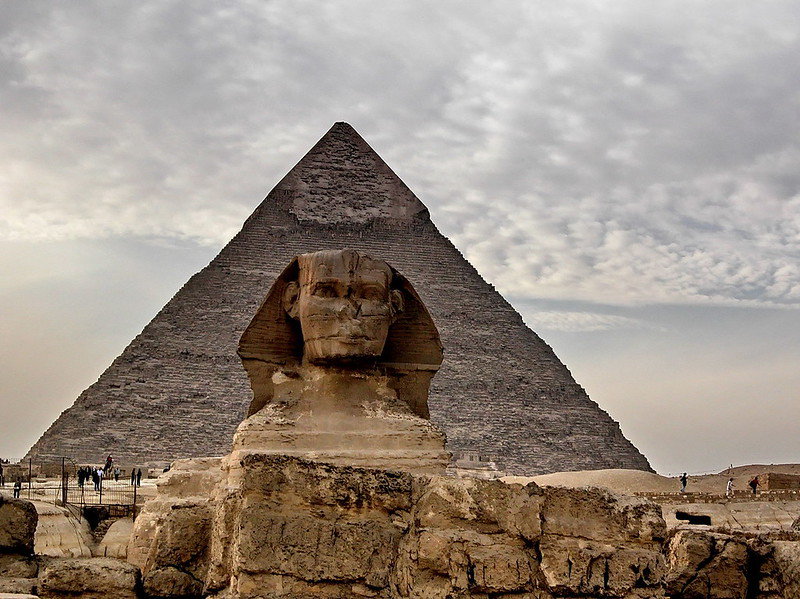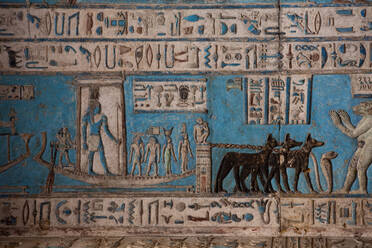Some civilizations have overtaken many complicated artifacts and structures in the form of ancient Egypt: Rosetta Stone, The Valley of the Kings, The Great Pyramids and Sphinx, and Tutankhamun's Gold Masks are all internationally recognized and attract millions of tourists each year.
Through the collection of breathtaking images, treasures of Nigel Fletcher-Jones of ancient Egypt are included in the amazing wealth of this ancient world. Here, we give you a glimpse inside so that you can enjoy the famous Egyptian sites and less knowledge artifacts by learning about your complicated history.
Pyramids at Giza: Wonders of Ancient Egypt

Extension Giza Pyramid Complex is probably the first thing that comes to mind when someone thinks of ancient Egypt. The most famous ancient Egyptian buildings have survived, Giza has pyramids, which were already older when the classical Greece was at its height. The Great Pyramid, made for King Khupu, is one of the most influential Pharaos of ancient Egypt, who ruled from 2589 to 2566 BC.
The Colossi of Memnon: Ancient Giants of Luxor
Luxar, a city that is equally rich in the remains of ancient Egypt, is located about 400 miles (643 km) south. King Emmanhotep III (1390–1352 BC), king of New Kingdom and "the most famous builder Egypt has yet been seen", had a significant impact on the field.
This 59-foot (18-meter) TALL Tall statue of Emmanhotep III was once placed in front of the king's vast monument temple, which was quickly destroyed by an earthquake. For decades, they were described as a statue of the mythical Greek hero Memon.
Ceiling, Great Hypostyle Hall, Temple of Dendera

The north of Karnaka is about 40 miles (64 km) temple of dendera, with another magnificent hall. The best outer hall, which is for the time of Emperor Tiberius (14–37 AD), was built with 24 columns, each of which had a capital in which the goddess's face was painted on one of her four faces. The roof depicts a symbolic sky chart with the signs of the famous Egyptian zodiac brought by the Romans.
Wadi Sura Cave of the Swimmers
Despite being far removed from the intricate temples and pyramids of later civilizations, the rock art of Egypt provides insight into the inventions of the first settlers. Nomadic hunters, fathers, and father-in-law lived in the lakes and savanna meadows that make up the modern-day Sahara.
The neolithic cave painting in Wadi Sura, now deeply located within the Western Desert of Egypt, is engaged in many activities for these nomadic people, which are probably involved in seasonal lakes.
Read more:- Discover the Most Beautiful Castles Around The World
Pectoral of the Goddess Nut, Tutankhamun Tomb
Outside the actual archaeological sites, many more Egyptians are preserved for future generations by major museums of the world. It is an example of a dazzle (or perhaps a belt fitting) an example of Egypt's most famous Pharaoh (Tutankhamun, 1336–1327 BCE).
According to the hiroglphic inscription, Sky Devi Nat "her son, king, under the protection of her body opens her arms on" while her wings are spread. This item, which is currently being developed in the Grand Egyptian Museum in Cairo, was believed to have been built for the father of Akhnaten, Tutankhamun earlier.
House Shrine of Akhenaten, Nefertiti and Daughters, Amarna

These complicated artifacts have made their way from Egypt to Germany and are now kept in the Egyptian museum in Berlin. This picture is most likely that there was a altar component for the divine family, including ancient Egyptian Pharaoh Akhnate, his famous wife Rani Nafartity and her daughters.
This may be a symbol of how the aqueton people saw them through the window of a certain palace. From Aten, the image of the sun, the sunshine of the sun that ends in the ank - the hygliffic symbol that reflects the "life" - on the royals.
Dahshur Bent Pyramid
Another important archaeological site and the Bent Pyramid ranks slightly lower than 20 miles (32 km) south of Dahshur, Cairo. This remarkable building is one of the pyramids manufactured by Pharaoh Senaferu (2613–2589 BCE), Egyptian's 4th dynasty, Khafre's grandfather and Khufu's father.
Due to construction issues, the lower part of the pyramid increases at an angle of 54 degrees to 154 feet (47 m) before converting to an angle of 43 degrees.
Funerary Mask and Psusennes I, Tanis
Between the wealth from Tanis, a city in the northeastern Egypt, it is a mask, another complicated museum item. It is currently displayed in the Egyptian museum in Cairo and made of glass paste, lampis lazuli and sheet gold, known as "meat of gods".
The artificial beard gently bends upwards, signifying the divine position of the dead Emperor Psusensens (1039–991 BCE), who was credited with assisting in the construction of a great temple of Tanis and pursuing the city. There is a drain filled with glass paste along the edge of the face that mimics the string used to tie the beard.

